
E-mail: font@focusonnature.com
Phone: Toll-free in USA 1-888-721-3555
or 302/529-1876
 |
PO Box 9021,
Wilmington, DE 19809, USA E-mail: font@focusonnature.com Phone: Toll-free in USA 1-888-721-3555 or 302/529-1876 |
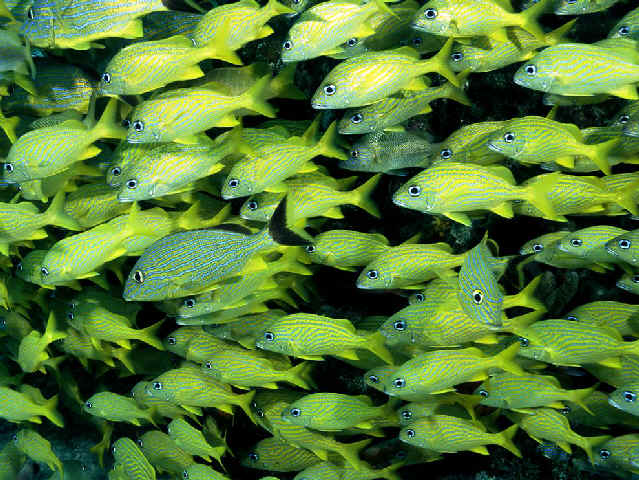 MARINE
FISH
MARINE
FISH
of Belize
Honduras, and
eastern Mexico
including the Yucatan Peninsula
and Cozumel Island
A list compiled by Armas Hill,
with fish to be found
in coral reefs and otherwise
Noting those seen during
Focus On Nature Tours
and pelagic trips
with an (*)
PHOTO AT UPPER RIGHT: Some
fish travel in SCHOOLS. as do these GRUNTS
Codes:
BZ
Belize
CZ
Cozumel Island (where the Caribbean Sea & the Gulf of Mexico meet)
HN Honduras
YP in the area of the Yucatan Peninsula,
including coastal & offshore Caribbean & Gulf of Mexico waters
Classifications as designated by the IUCN (International Union for the
Conservation of Nature) relating to threatened species:
(t1): critically endangered
(t2): endangered
(t3): vulnerable
(nt): near-threatened
(ph): species with a photo in the FONT website
Relating to Illustrations in Books:
(ASC:xxx) refers to plate numbers
in the "National Audubon Society Field Guide to Seashore Creatures"
(ATMF:xxx) refers to plate number of photo in
the "National Audubon Society Field Guide to Tropical Marine
Fishes"
(FGCF:xxx) refers to page with an illustration in the book
"A Field Guide to Coastal Fishes from Maine to Texas" by Val Kells
& Kent Carpenter
Links:
A
Listing of scheduled Focus On Nature Tours
Upcoming
FONT Birding & Nature Tours in Central America (including Mexico)
FONT Past Tour Highlights
Other Marine Life in Belize
& eastern Mexico
(incl. Sea Turtles, Corals,
Jellyfish, Mollusks, Arthropods, & creatures in caves)
Mammals,
including Marine Mammals, in: Central
America Mexico
Directory of Photos in this
Website
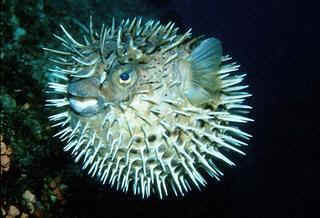
Porcupinefish
There are 2 photos of this species in the list below.
Links, in the following list, to:
Sharks & Rays
Sawfishes
Guitarfish Ocean Sunfish
Sea Catfishes
Toadfishes & Frogfishes Needlefishes
Trumpetfishes
Cornetfishes
Pipefishes & Seahorses
Scorpionfishes Sea Robins
Sea
Basses & Groupers (inc. Hamlets) Jacks &
Pompanos
Pomfrets
Snappers Mojarras
Grunts Goatfishes
Porgies
Drums & Croakers
Angelfishes
Butterflyfishes Damselfishes
Wrasses Parrotfishes
Cardinalfishes
Squirrelfishes Bigeyes
Bluefish Cobia
Remoras Driftfishes
Butterfishes Tilefishes
Flatfishes
(Flounders) Tonguefishes
Surgeons &
Tangs Triggerfishes
Filefishes
Boxfishes
Eels Tarpon
Snook
Barracuda
Mullets
Puffers
Porcupinefish
Dolphinfish
Cutlassfish Tunas &
Mackerels Billfishes
![]()
Some
information is in this list about regional seafood specialties in the Yucatan
& Belize,
shared with us by Chef David Sterling. For more info, click this link:
An excellent new
book has been published, in 2014, by David Sterling, "Yucatan, Recipes
from a Culinary Expedition".
In this list references are made to that book.
PLANKTON-FEEDING
SHARKS & RAYS
WHALE SHARK (Family Rhinocodontidae)
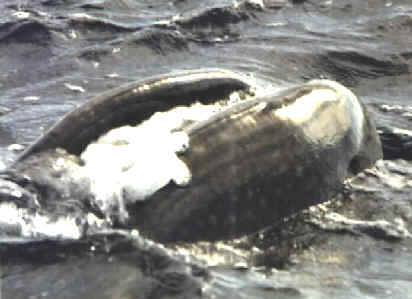
A mouth of
a Whale Shark photographed during a FONT tour
(photo by Marie
Gardner)
Another photo of a
Whale Shark is later in this list with
Pilotfish
(in the Jacks & Pompanos grouping).
Other sharks follow the
rays in this list.
EAGLE RAYS (Family Myliobatidae)
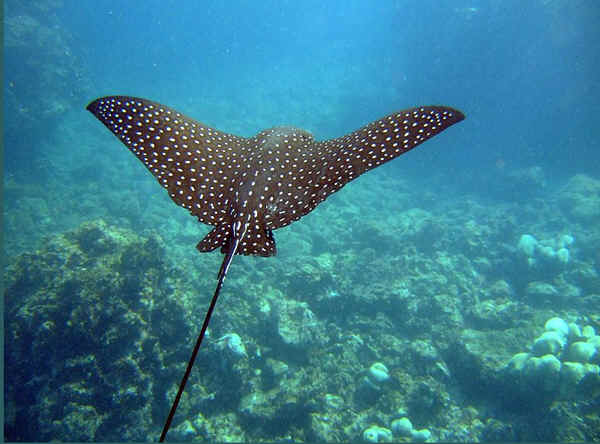
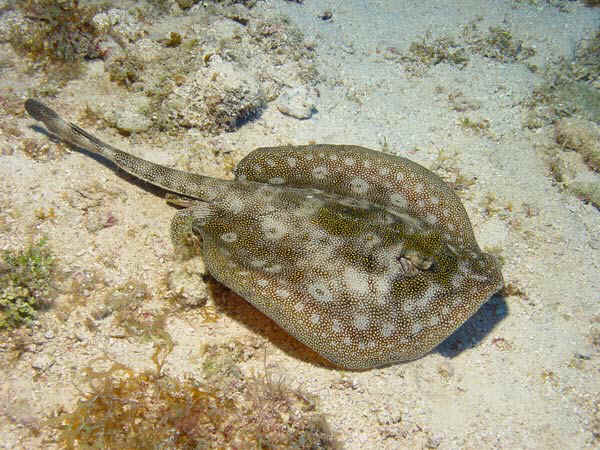
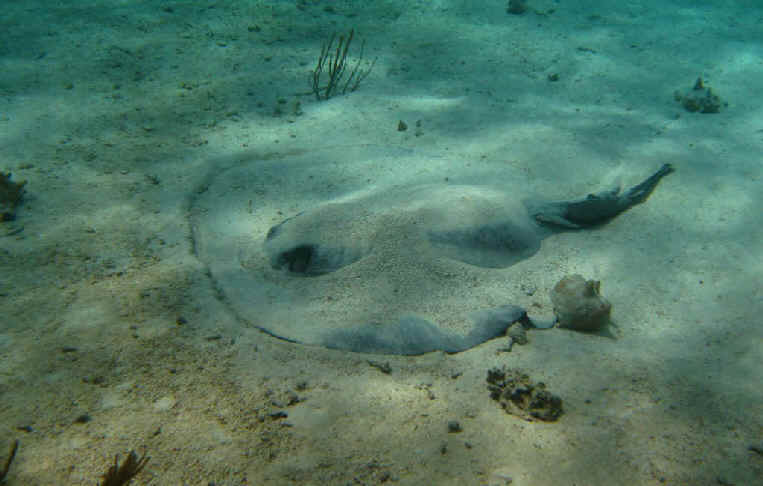

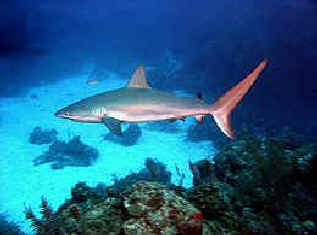
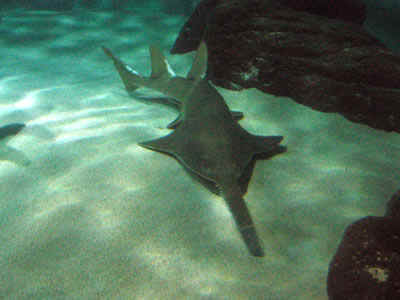
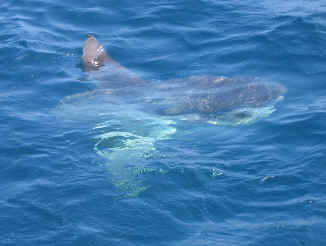
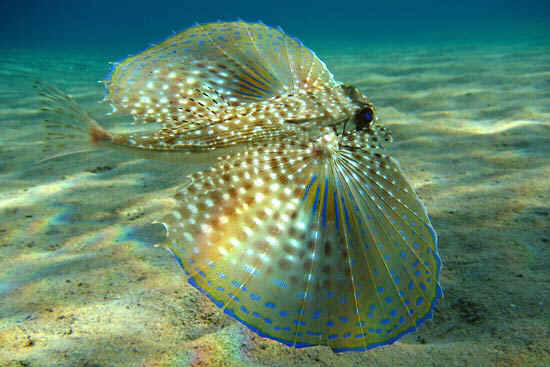
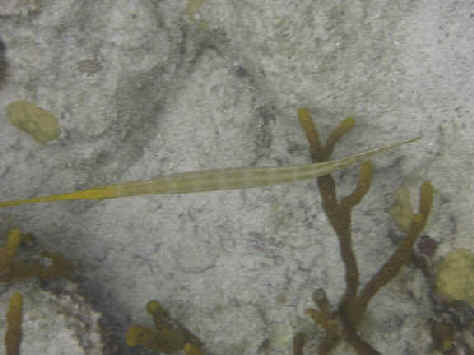
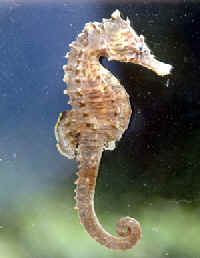
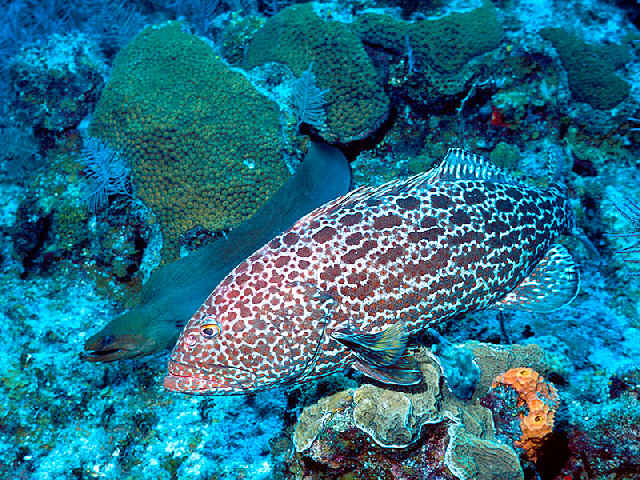
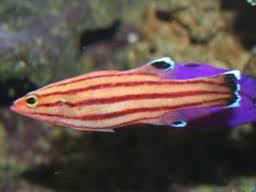
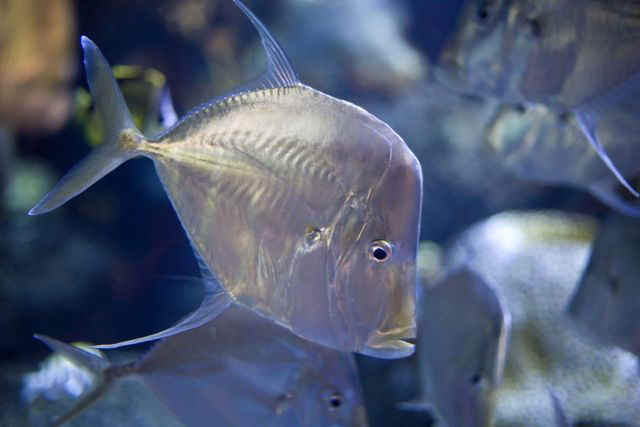
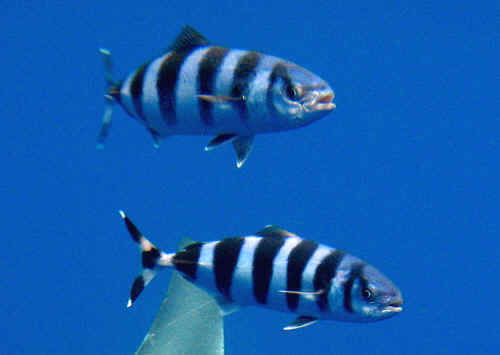
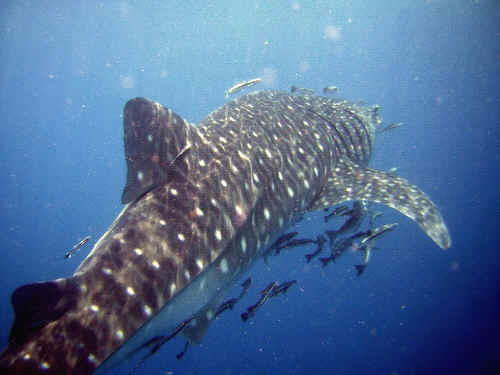
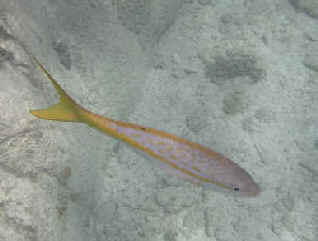
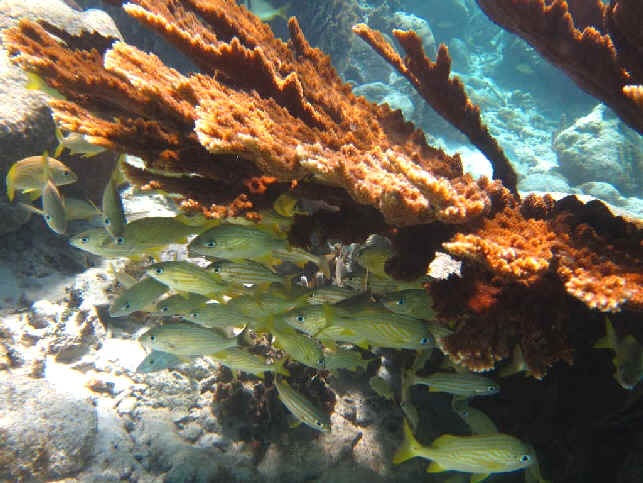
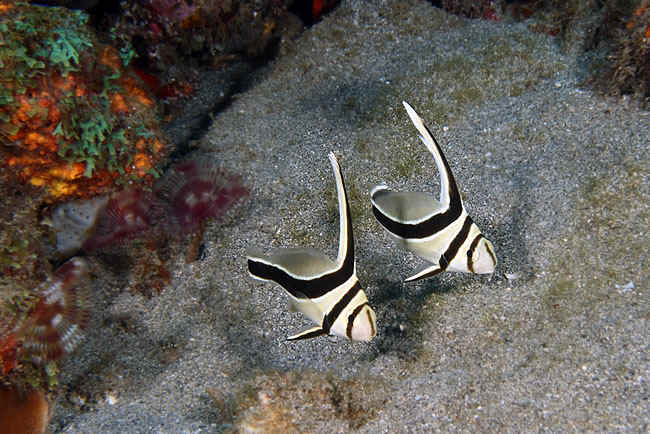
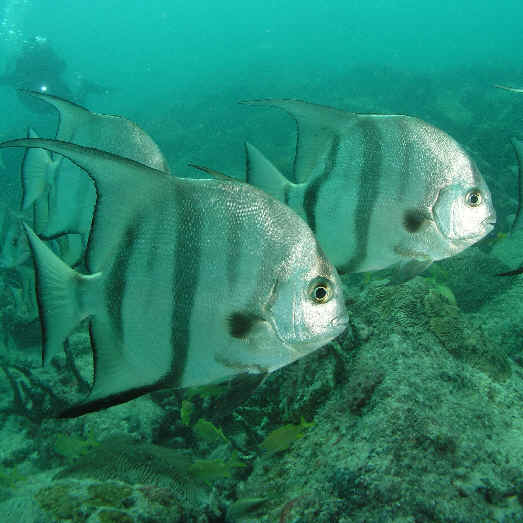
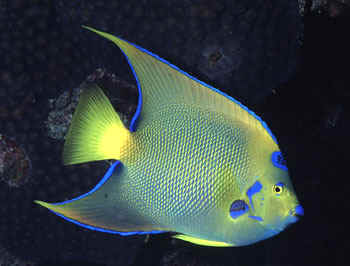
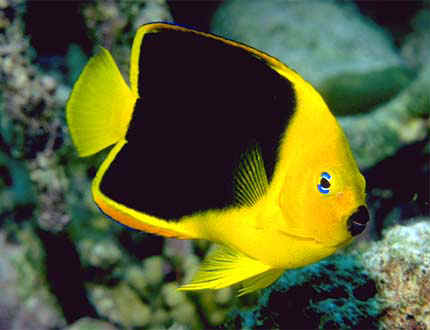
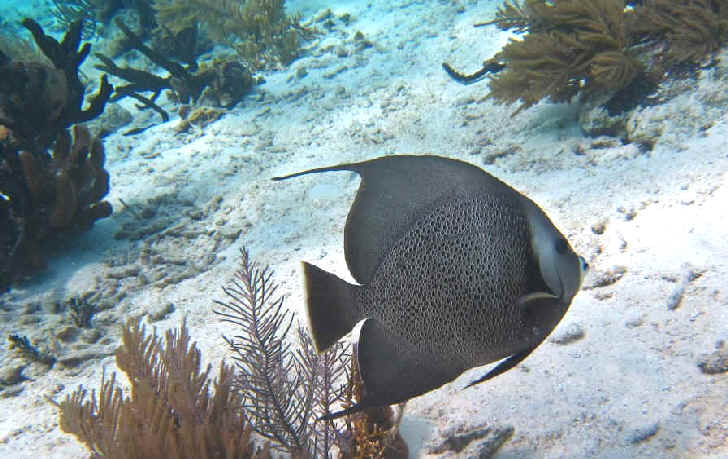
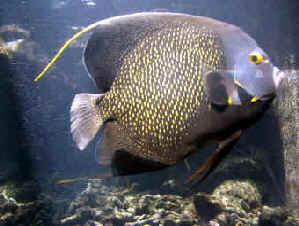
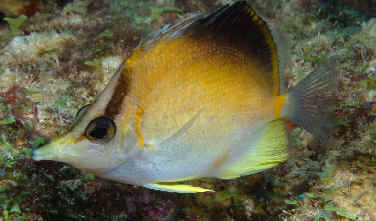
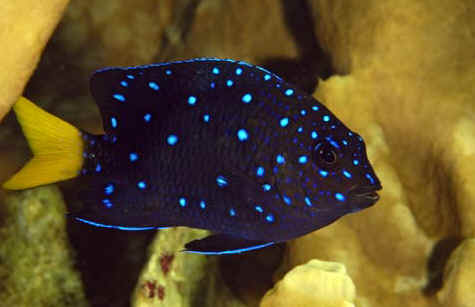
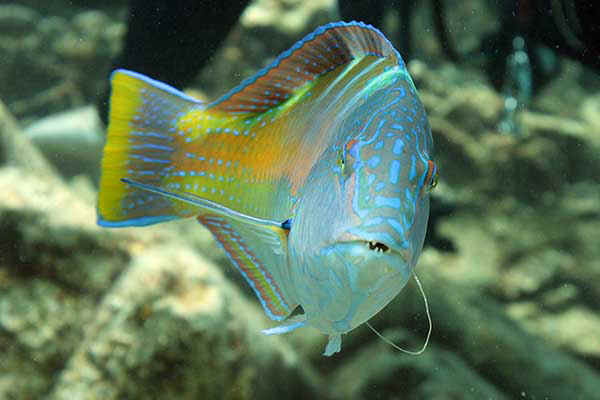
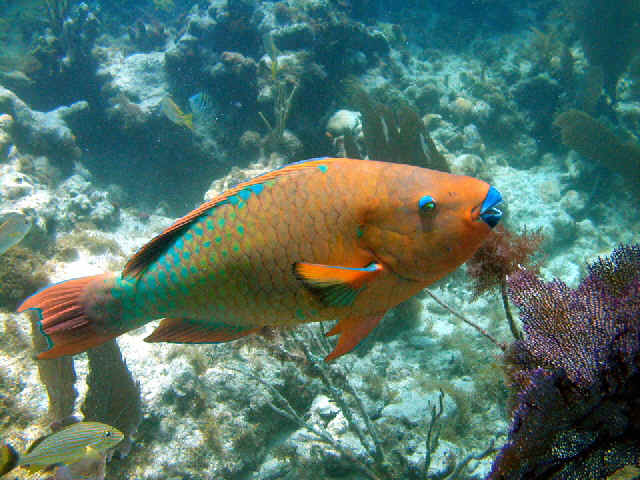
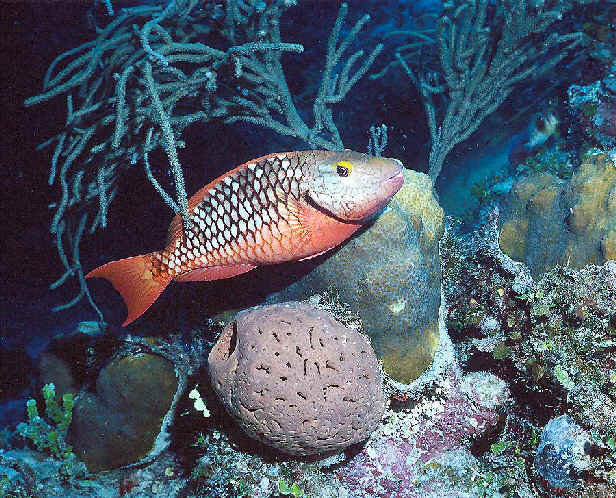
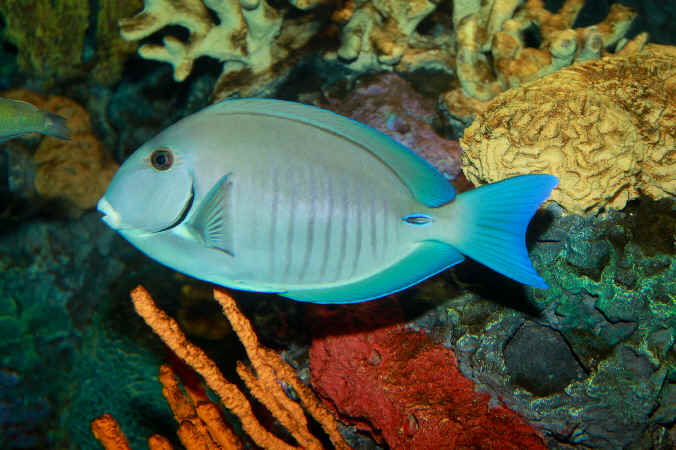
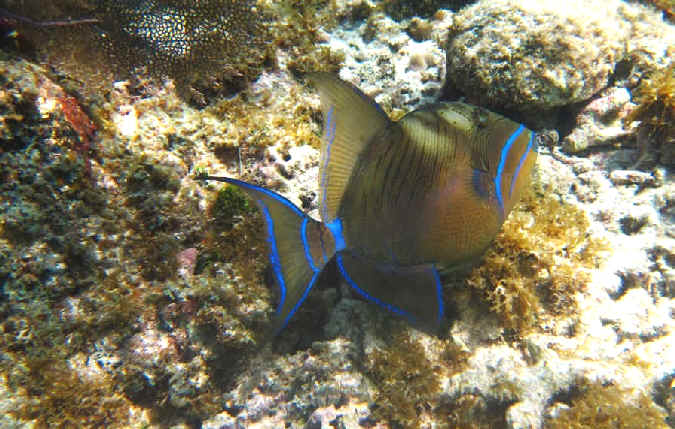
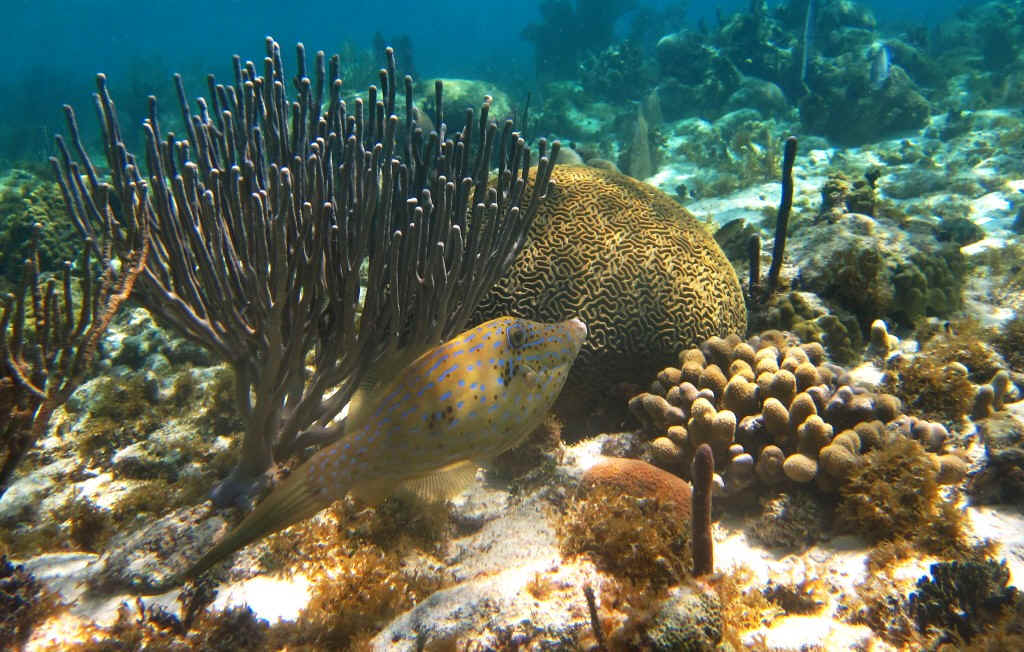
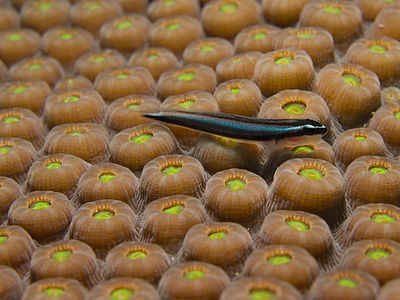
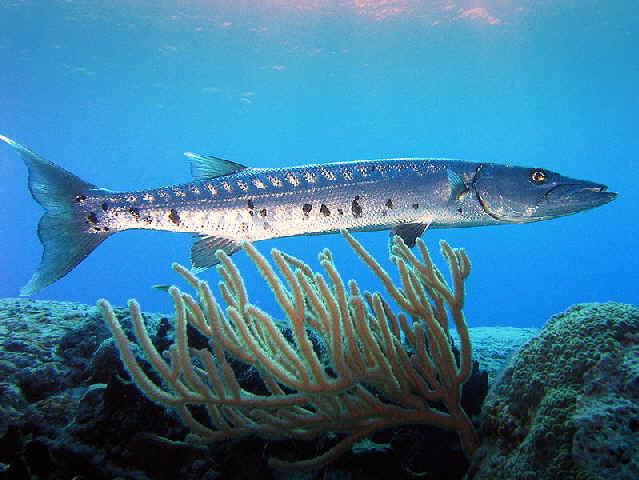
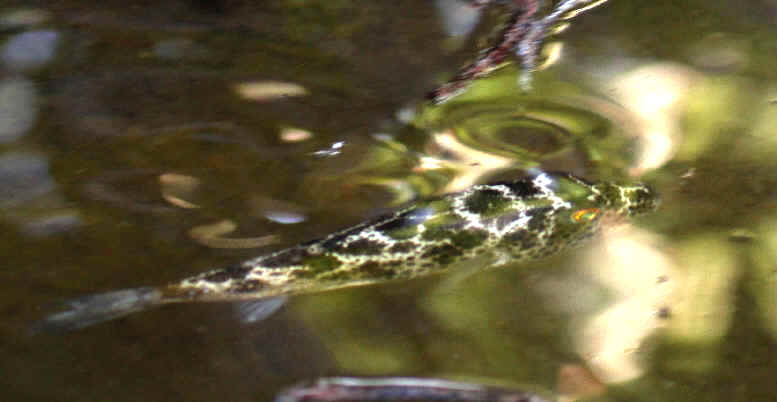
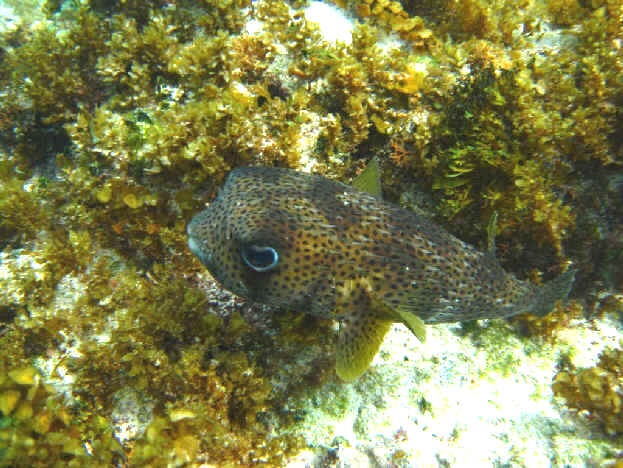
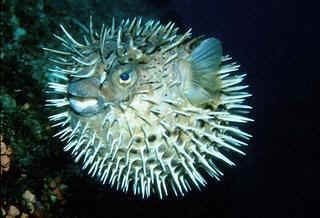
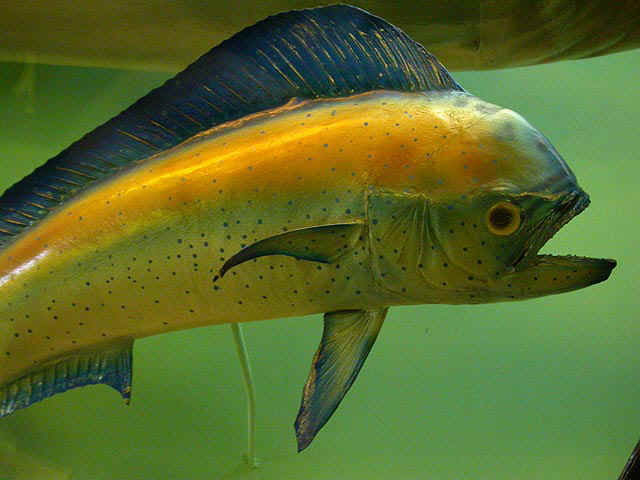
References include:
"Sea Life - A Complete Guide to the Marine Environment", edited by
Geoffrey Waller, with principal contributors Marc Dando & Michael Burchett,
1996.
"Fishes of the Atlantic Coast: Canada to Brazil, including the Gulf of
Mexico, Florida, Bermuda, the Bahamas, and the Caribbean", by Gar Goodson,
1976.